
Microsoft’s journey to becoming a multi-trillion-dollar enterprise stands as a compelling testament to strategic evolution in the fiercely competitive tech landscape. Having reached the exclusive $2 trillion valuation in 2021 and soaring past $3 trillion more recently, the company’s remarkable resurgence under CEO Satya Nadella has captured global attention. This trajectory represents a seven-fold increase in market capitalization since Nadella took the helm in February 2014, marking one of the most significant corporate transformations in recent history.
The common narrative often attributes Microsoft’s enduring success solely to its legacy products, particularly the ubiquitous Windows operating system. However, a deeper analysis reveals that while its foundational software created an empire in the 1990s and early 2000s, the company’s more recent, explosive growth is rooted in a nuanced and remarkably effective business strategy that extends far beyond its traditional offerings. This strategy, meticulously cultivated and executed, involved pivotal shifts in culture, customer focus, technological investment, and business models.
Indeed, Microsoft’s story offers invaluable lessons for any organization navigating rapid technological change and market disruption. It is a narrative of reinvention, moving from a position where it was “being overshadowed by Apple, Google, and Amazon” to becoming a “cloud-first, AI-powered juggernaut.” We will now explore the strategic pillars that have driven this extraordinary financial and operational renaissance, dissecting the key decisions and cultural shifts that have redefined Microsoft’s place at the pinnacle of global industry.

1. **Satya Nadella’s Transformational Leadership and Cultural Shift**Satya Nadella’s appointment as CEO in 2014, and his subsequent elevation to board chair, ushered in an era of profound transformation at Microsoft. His leadership has been a critical catalyst in the company’s journey from a formidable, yet somewhat stagnant, technology giant to a dynamic leader in emerging tech domains. This shift was not merely strategic; it was deeply cultural, moving the organization from a “rigid, Windows-first organization to a flexible, cloud-first, AI-ready powerhouse.”
A cornerstone of Nadella’s leadership has been his emphasis on collaboration, continuous learning, and fostering open-source ecosystems. This marked a significant departure from the internal dynamics that characterized the prior Steve Ballmer regime, which reportedly fostered an “cannibalistic culture” both within and outside the firm. By dismantling internal silos and promoting a more unified, forward-looking ethos, Nadella empowered employees and revitalized the company’s innovative spirit, enabling it to look beyond its “own walled garden.”
The positive impact on staff morale and engagement under Nadella’s leadership has been palpable. The context highlights that “Microsoft staff respond positively to the customer primacy message,” indicating a desire among employees to contribute meaningfully to customer success. This cultural recalibration created an environment where innovation could thrive, where lessons from past missteps – like the failure of Windows Phone – could be absorbed, and where new, bold bets, such as significant investments in artificial intelligence, could be effectively pursued. The composed calmness observed at the firm, even amid its high achievements, reflects the steady hand of a leader who understands both the highs and the lows of a long corporate journey.
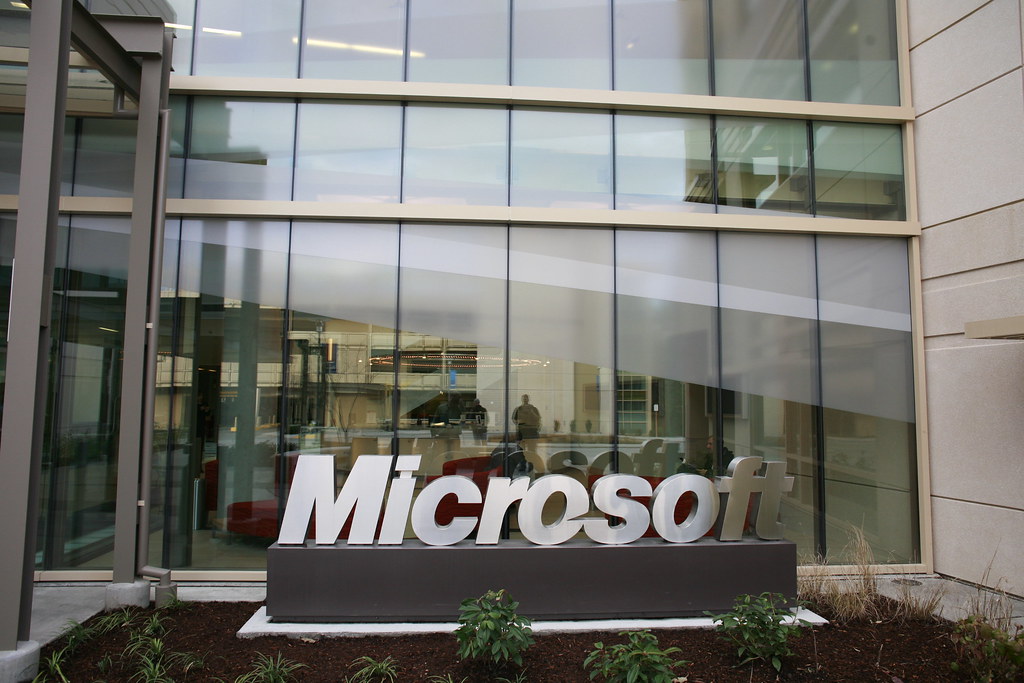
2. **Customer Primacy: The Guiding Philosophy**At the heart of Microsoft’s strategic renewal under Satya Nadella lies an unwavering commitment to customer primacy. This philosophy, deeply rooted in Peter Drucker’s insight that “there is only one valid purpose of a corporation: to create a customer,” has become a foundational principle driving decision-making across the organization. Nadella’s dedication to this concept is evident in his consistent focus, described as an “obsession with customer primacy.”
This customer-centric approach manifests operationally in how Nadella engages with his teams. Brad Anderson, Corporate Vice President of Enterprise Client and Mobility at Microsoft, clearly articulates this, stating, “When you go in to talk to Satya… you start with the customer. What’s the customer problem? What are they trying to solve? How are we making their life better?” This directive ensures that every initiative and discussion is anchored in understanding and addressing user needs, making “usage and usage” the primary factors governing product development and strategy.
Crucially, this focus on the customer extended to how engineering teams are compensated and rewarded. In the past, incentives were based on metrics like shipping dates and feature delivery, without a clear understanding of actual product adoption. Under Nadella, the emphasis shifted dramatically: “We pull up the dashboards and we show him all the usage metrics. What’s the growth in the last seven days? What’s the growth of the last month? What are people using? What are they not using? It’s all grounded one hundred percent in the customer.” This direct link between usage and reward reinforced a culture where customer value creation was paramount, distinguishing Microsoft from organizations that might show healthy revenue while “losing customers.”
The importance of customer primacy has occasionally been debated by proponents of stakeholder capitalism, who point to Nadella’s 2019 statement about harmonizing “multiple constituents.” While acknowledging that “all stakeholders are important and that finding the right balance is key,” the consistent message from Nadella’s book, *Hit Refresh*, and his full talks, confirms that the customer remains the unequivocal “starting point” for Microsoft’s strategic thinking. This deep understanding of customer needs ultimately creates a virtuous cycle, where satisfied customers drive usage, which in turn leads to revenue growth and shareholder value.

3. **The Strategic Pivot to Cloud Computing: Azure’s Ascendancy**Microsoft’s phenomenal growth in the past decade is inextricably linked to its bold and decisive pivot towards cloud computing, a strategy spearheaded by Satya Nadella himself, who previously led the company’s cloud division. Recognizing the “immense power of digital technology in empowering employees, optimizing operations, and engaging customers,” Microsoft embarked on a “cloud-first, mobile-first” strategy that profoundly reshaped its technological and business landscape. This prescient move positioned the company “at the forefront of technological evolution” during a critical period of industry transformation.
The most tangible manifestation of this strategic shift is the remarkable ascendancy of Microsoft Azure. Azure has not only established itself as the “second largest public cloud provider in the world,” trailing only Amazon Web Services, but it has also become a “core pillar” of Microsoft’s identity and revenue generation. In fiscal 2024, cloud revenue impressively constituted “over half of Microsoft’s total income,” underscoring its pivotal role in the company’s financial success and market valuation. Azure’s capabilities extend across a vast spectrum, powering everything from “enterprise software to artificial intelligence infrastructure, developer tools, and cybersecurity systems.”
Microsoft’s investment in Azure has been characterized by a relentless pursuit of “high-performance and sustainable computing infrastructure.” This commitment leverages three critical economies of scale: cost-efficient data centers that deploy computational resources at a significantly lower cost per unit, data centers that coordinate and aggregate diverse customer demands and usage patterns to optimize resource utilization, and multi-tenancy locations that effectively reduce application maintenance labor costs. These foundational elements ensure Azure remains competitive, scalable, and adaptable to the evolving needs of businesses worldwide.
The transition to a cloud-centric model also involved making existing flagship products, such as Microsoft Office, cloud-based. This strategic move ensured that Microsoft’s traditional strengths were seamlessly integrated into its new cloud offerings, creating a comprehensive ecosystem that caters to modern enterprise requirements. By “prioritizing the development of cloud services,” Microsoft has not only regained lost ground but has also cemented its position as a dominant force in the global technology arena, directly challenging established leaders and driving the digital transformation for countless organizations.

4. **From One-Time Sales to Recurring Revenue: The Subscription Model**A fundamental transformation in Microsoft’s business model that significantly contributed to its stable and predictable revenue growth was the decisive shift from one-time software sales to a subscription-based approach. This strategic evolution, epitomized by offerings like Microsoft 365 and Office 365, represented a “game-changer” for the company. Instead of relying on sporadic revenue spikes from periodic software upgrades, Microsoft now enjoys “stable, recurring revenue from millions of users.”
This recurring revenue model has profound implications for both Microsoft’s financial stability and its customer relationships. The predictable cash flow generated by subscriptions has not only “stabilized earnings” but has also cultivated deeper “customer loyalty and enterprise penetration.” By engaging customers in an ongoing relationship rather than a transactional one-off purchase, Microsoft can continuously add value, encourage deeper integration of its services, and respond more agilely to user feedback.
The shift to subscriptions also made Microsoft’s business far more resilient against economic fluctuations and market uncertainties. With a steady stream of income, the company gained greater financial flexibility to invest in research and development, pursue strategic acquisitions, and navigate downturns without severe impacts on its core operations. This robust model ensures that Microsoft remains a reliable compounder in the investment world, providing consistent returns and fostering long-term growth.
The strategic pillar, “Subscription: Microsoft has successfully implemented a subscription-based model for various products and services, including Office 365 and cloud services,” highlights its centrality to Microsoft’s modern success. This approach aligns perfectly with the current demands of the enterprise and consumer markets, where access to continuously updated services, rather than static products, is increasingly valued. It underscores a forward-thinking perspective that transformed Microsoft’s revenue generation methods and reinforced its market leadership.
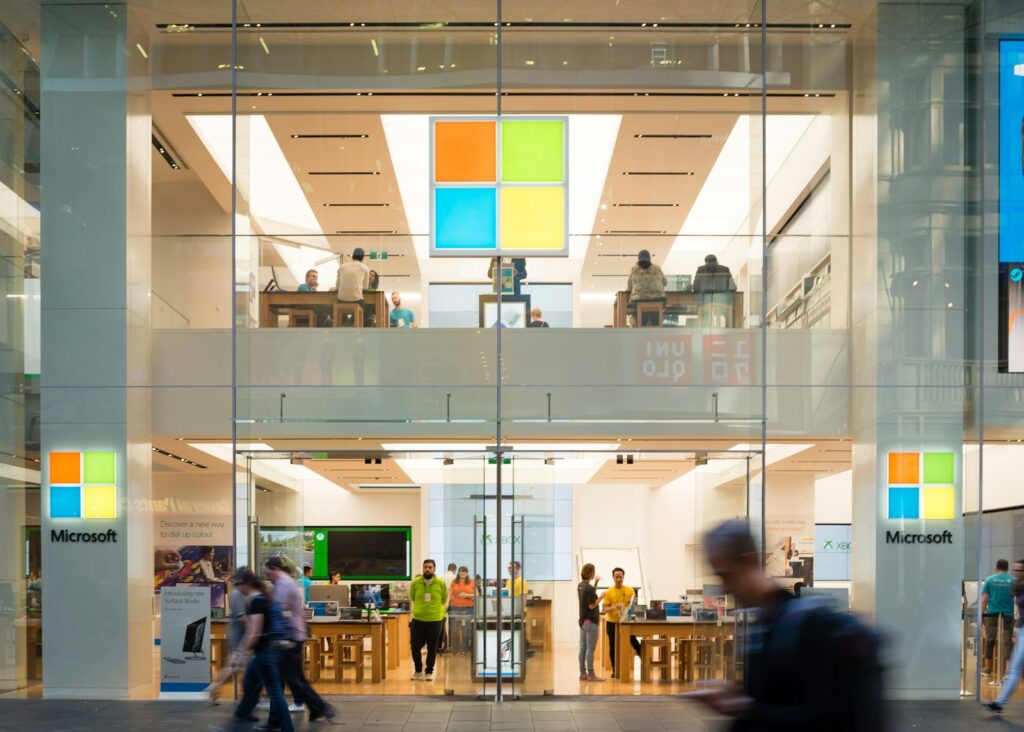
5. **Strategic Acquisitions: Strengthening the Ecosystem**Microsoft’s ascent to a multi-trillion-dollar valuation has been significantly bolstered by a disciplined and strategic approach to acquisitions. Rather than pursuing broad, unfocused expansions, the company has consistently engaged in “targeted and impactful” investments that intelligently strengthen its existing ecosystem and expand its competitive moat. These acquisitions are carefully chosen to complement Microsoft’s core strategies in cloud computing, AI, and enterprise solutions.
One prominent example is the acquisition of LinkedIn, which provided Microsoft with a “direct channel into professional networking and enterprise HR tools.” This strategic move enriched Microsoft’s suite of business services, integrating professional social interaction with its productivity and cloud offerings. Similarly, the acquisition of GitHub brought the vast “developer community under its wing,” solidifying Microsoft’s position in software infrastructure and fostering greater engagement with open-source initiatives. Remarkably, GitHub’s annual recurring revenue soared to $1 billion in 2022, demonstrating the immense value created by this integration.
Further enhancing its capabilities, Microsoft acquired Nuance Communications, expanding its “AI capabilities, particularly in healthcare and voice tech.” This directly supports its broader AI strategy, allowing for more sophisticated integration of artificial intelligence into its diverse product portfolio. The audacious acquisition of Activision Blizzard, meanwhile, provided Microsoft with a “firm grip on the future of gaming, virtual worlds, and the metaverse,” positioning the company strategically at the intersection of entertainment and emerging digital experiences.
Each of these investments serves a distinct purpose, extending Microsoft’s reach and deepening its technological prowess. These acquisitions are not merely about adding new revenue streams; they are about intelligently integrating key assets and communities that amplify Microsoft’s long-term vision. This judicious M&A strategy ensures that the company remains at the forefront of innovation, consistently enhancing its value proposition across its diverse customer segments and solidifying its market leadership.
Read more about: Remembering 2005? A Deep Dive into Google’s Transformative Evolution from Search to Global Tech Empire

6. **Financial Discipline and Cash Flow Mastery**Beneath Microsoft’s innovative technological advancements and strategic pivots lies a bedrock of rigorous “financial discipline and cash flow mastery.” This unwavering commitment to fiscal prudence ensures that the company possesses the resources not only to sustain its operations but also to fuel its aggressive growth strategies without compromising its financial health. It’s a testament to the idea that innovation, when paired with sound financial management, creates an unstoppable force.
The company consistently generates “over $80 billion in free cash flow annually,” a remarkable figure that speaks to its operational efficiency and market dominance. This robust cash flow, combined with “some of the highest margins in tech,” provides Microsoft with immense strategic flexibility. Its balance sheet is described as “pristine,” enabling it to make substantial investments in critical areas like research and development, aggressively pursue future technologies such as AI, and return capital to shareholders, all “without overleveraging.”
Such financial strength has direct implications for stakeholder confidence. Shareholders, in particular, have little to complain about, having witnessed a “seven-fold increment of the share price and a market capitalization of $2 trillion” under Nadella’s tenure. This reinforces the idea that “making money is the result of getting the other things in the right balance and the right order,” indicating that customer primacy and strategic execution ultimately translate into significant financial returns.
Moreover, Microsoft’s strong financial position has contributed to a notable absence in “anti-Big-Tech hearings and investigations to date” on the government front. This stability and perception of responsible corporate governance further solidifies its market standing. Ultimately, Microsoft’s mastery of its financial levers ensures it has the sustained capacity to innovate, acquire, and lead, making it a resilient and enduring force in the global economy and a compelling long-term opportunity for investors.
Read more about: Beyond the Buzzer: 14 Surprising Side Businesses of Pro Athletes You’ve Never Heard Of

7. **Aggressive AI Investments: The Next Growth Engine**Microsoft’s future growth trajectory is profoundly shaped by its aggressive and strategic investments in artificial intelligence, marking AI as the company’s undisputed next growth engine. This forward-looking commitment is most visibly exemplified by its deep partnership with OpenAI, the visionary creators of ChatGPT, an investment widely credited with placing Microsoft at the forefront of the generative AI revolution. This pivotal collaboration has not only amplified Microsoft’s technological capabilities but has also allowed it to lead the charge in defining the AI era.
The impact of this AI-first approach is rapidly permeating Microsoft’s entire product ecosystem. The company’s branded AI assistant, Copilot, is being seamlessly integrated across its ubiquitous Microsoft 365 suite, including Word, Excel, PowerPoint, and Teams. This intelligent assistant empowers users to automate tasks, generate content, and significantly boost their productivity, fundamentally reinventing how individuals and organizations interact with their tools. Beyond user-facing applications, AI is also fortifying Azure’s backend infrastructure, enhancing cybersecurity services, and deeply embedding into enterprise integrations, ensuring a comprehensive, AI-powered operational framework.
Satya Nadella’s “uncanny knack for identifying the winning horse” has been particularly evident in Microsoft’s AI strategy. The substantial investment in OpenAI, believed to be around $13 billion, was a critical and instrumental move that propelled the company “way ahead of its peers.” This foresight enabled Microsoft to leverage OpenAI’s disruptive innovations, such as ChatGPT, and integrate large language models across its products, positioning it squarely to capitalize on a generative AI market projected to reach $66.62 billion in 2024.
Moreover, Nadella’s astute leadership was on display during the challenging period surrounding Sam Altman’s departure from OpenAI. His swift decision to offer Altman a leadership role in a new Microsoft AI research lab, coupled with his efforts to facilitate Altman’s return as OpenAI’s CEO, underscored Microsoft’s commitment to stability and continued collaboration in the AI space. This strategic maneuver cemented Microsoft’s leading position, allowing it to navigate a complex situation while maintaining its competitive edge and ensuring sustained innovation in this rapidly evolving field. Analysts project that these aggressive AI investments could generate over $100 billion in annual revenue for Microsoft by the end of the decade, making it a critical driver of long-term value.
Read more about: The 13 Best Financial Investments Made by 14 Retired NFL Players
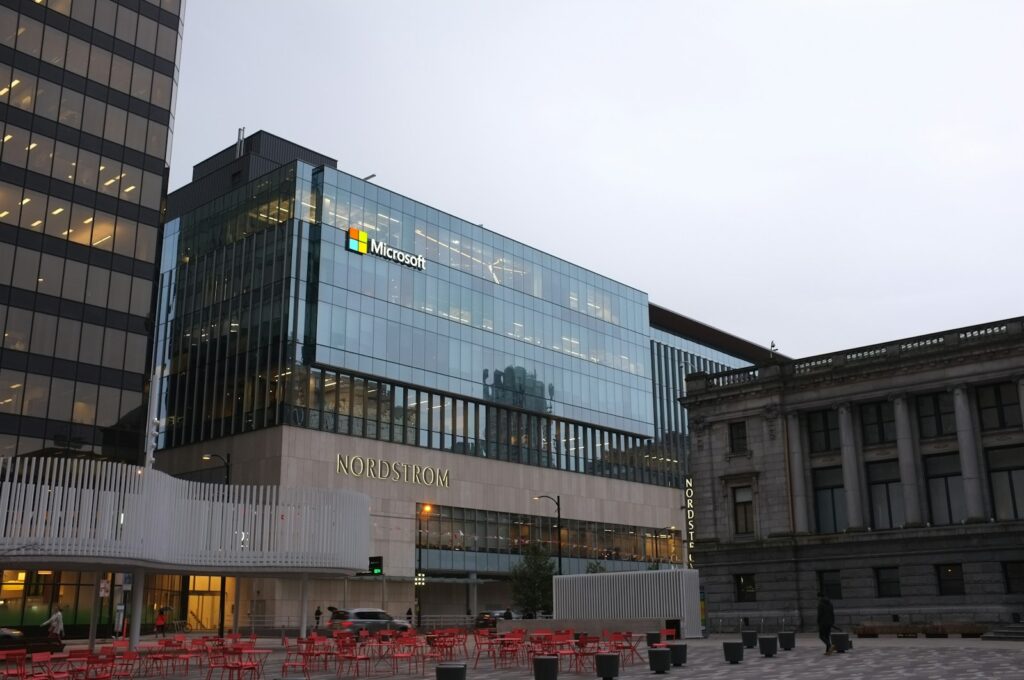
8. **Reinventing Productivity and Business Processes**A core tenet of Microsoft’s ongoing strategy is the continuous reinvention of productivity and business processes, a pillar dedicated to empowering customers with the technology and resources needed for secure and efficient hybrid work environments. This strategic focus acknowledges the profound shifts in how the world works, learns, and connects, and positions Microsoft as a vital enabler of digital transformation across industries. The company’s comprehensive portfolio, including Office 365, Dynamics 365, and LinkedIn, actively contributes to this vision.
Office 365, evolving beyond its traditional desktop applications, now offers a cloud-based, collaborative suite that facilitates seamless teamwork and communication regardless of location. Dynamics 365 provides integrated cloud-based solutions for critical business applications like ERP and CRM, streamlining operations and offering profound insights for enterprises. LinkedIn, as the prominent professional social network acquired by Microsoft, further extends this productivity focus by providing direct channels into professional networking and enterprise HR tools, enriching Microsoft’s suite of business services and fostering professional growth.
This segment, dedicated to enhancing productivity and information management, represents a substantial portion of Microsoft’s revenue, accounting for approximately one-third of its total income. It underscores Microsoft’s unwavering commitment to continuous innovation and advancement in productivity and collaboration tools and services, which remains at the very core of its growth strategy. By focusing on empowering employees, optimizing operations, and engaging customers, Microsoft ensures its offerings are not merely tools but catalysts for transformation.
Microsoft’s approach within this pillar is to provide cutting-edge software, hardware, and services that equip individuals, communities, and businesses with the necessary tools to unlock their full potential. This involves making computing more personal and user-centric, enabling intuitive and dynamic interactions with technology. Through ongoing development and integration, Microsoft ensures that its solutions not only meet current business demands but also anticipate future needs, securing its role as a indispensable partner in the modern global economy.
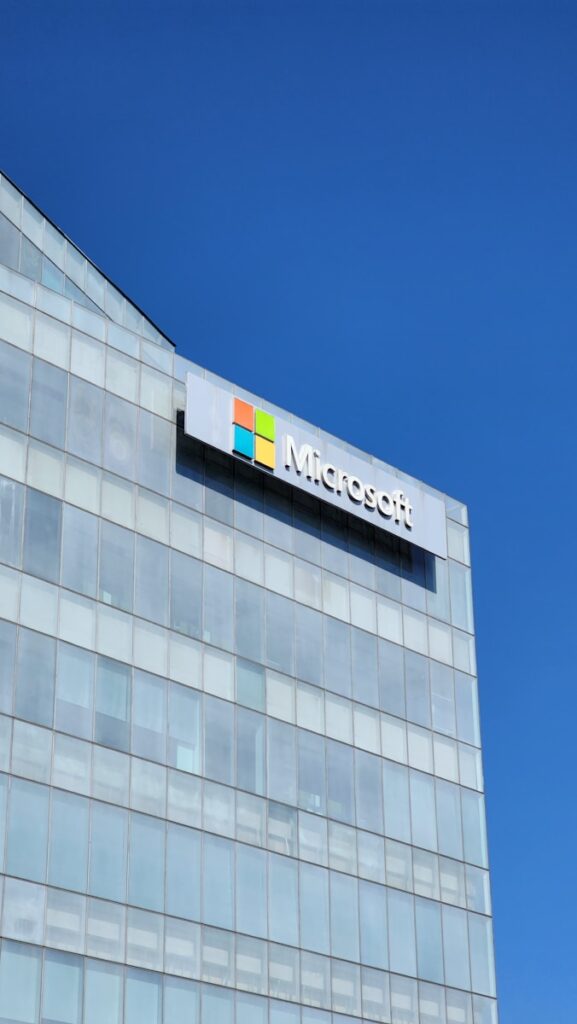
9. **Building Intelligent Cloud and Intelligent Edge Infrastructure**Microsoft’s unwavering commitment to building an intelligent cloud and intelligent edge platform is fundamental to its continued dominance and future growth. This strategic pillar recognizes the “immense power of digital technology” in empowering operations and engaging customers, driving Microsoft to invest significantly in a “high-performance and sustainable computing infrastructure” that caters to the increasing demand for fast and reliable access to its services. Azure, already the second-largest public cloud provider globally, continues to scale not just in size, but in complexity and capability.
The expansion of Azure’s capabilities includes sophisticated hybrid cloud offerings, which allow businesses to maintain sensitive data on-site while seamlessly integrating with the broader cloud infrastructure. This flexibility is crucial for enterprises navigating diverse regulatory and operational requirements. Furthermore, Microsoft is pouring billions into AI-specific infrastructure, including investments in next-generation GPUs and advanced data centers, to support the escalating demands of its AI initiatives. These substantial investments are critical for providing the computational horsepower required for cutting-edge AI development and deployment.
Beyond the centralized cloud, Microsoft is aggressively developing edge computing and low-latency processing solutions. These innovations are creating entirely new use cases across vital sectors such as healthcare, automotive, and finance, where real-time data processing and immediate responsiveness are paramount. By bringing computation closer to the data source, Microsoft is enabling a new wave of intelligent applications and services, expanding its market reach and reinforcing its technological leadership.
Even as a massive enterprise, Microsoft’s cloud division continues to demonstrate impressive double-digit year-over-year growth, underscoring its pivotal role as a primary revenue generator and a core pillar of the company’s identity. By leveraging its extensive network of cloud computing infrastructure and data centers, Microsoft is delivering the intelligent cloud and intelligent edge platform, providing the foundational backbone for digital transformation across countless organizations worldwide. This relentless focus ensures Azure remains competitive, scalable, and adaptable to the evolving technological landscape.
Read more about: Unlock Your Potential: The Ultimate Guide to 15 Free Online Courses for High-Income Skills in 2025
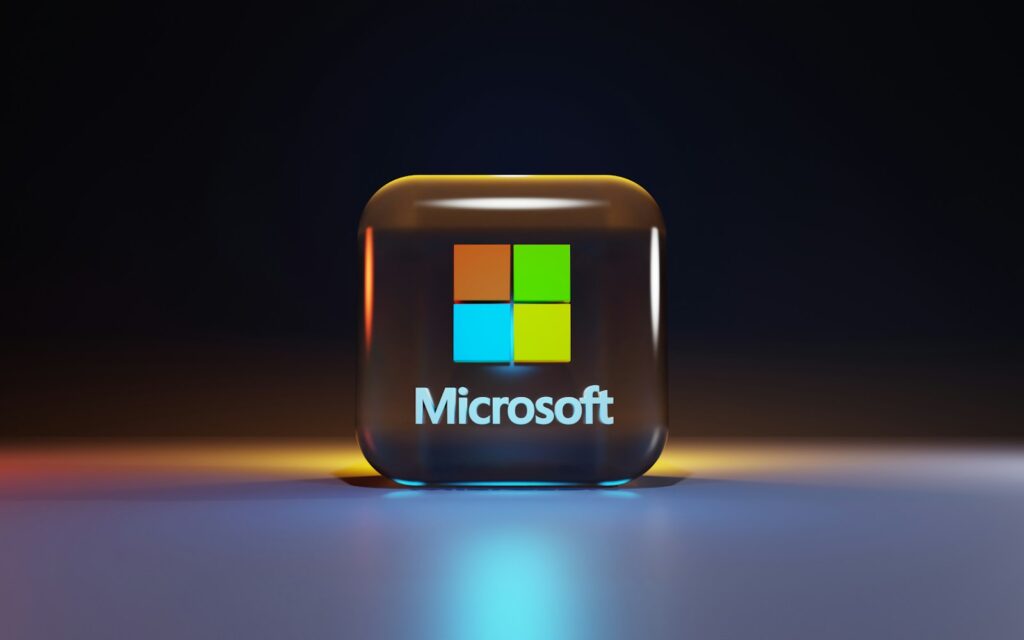
10. **Fostering More Personal Computing Experiences**Another crucial facet of Microsoft’s comprehensive business strategy is its dedication to fostering more personal computing experiences, moving beyond a purely enterprise focus to enrich users’ overall interaction with technology. This involves placing people at the very core of the computing experience, aiming to enable users to interact with technology in intuitive, engaging, and dynamic ways. It’s about creating interfaces and experiences that feel natural, responsive, and deeply integrated into daily life, rather than just being functional.
This commitment translates into the continuous development of user-friendly interfaces, intuitive interactions, and personalized experiences across its diverse product ecosystem. From the ubiquitous Windows operating system, which remains a cornerstone of this segment, to various hardware and software offerings, Microsoft strives to empower individuals to harness the full potential of technology. Windows licenses for devices continue to serve as a primary revenue source, demonstrating the enduring importance of this foundational product in Microsoft’s portfolio.
Beyond the desktop, Microsoft significantly enhances personal computing through its strong presence in the gaming sector. Offerings like Xbox games and consoles, alongside services such as Game Pass, provide immersive entertainment experiences that resonate with a vast global audience. These platforms are not merely for gaming; they are evolving into social hubs and gateways to virtual worlds, blending entertainment with interactive personal computing. This expansive view of “personal computing” allows Microsoft to touch users’ lives in multifaceted ways.
Moreover, this segment encompasses revenue generated from online advertising, particularly through its Bing search engine, and the sales of devices and PCs. Collectively, these products and services aimed at enriching users’ overall experience account for approximately one-third of Microsoft’s total revenue. By focusing on accessibility, personalization, and seamless interaction, Microsoft ensures that its technology enhances individual productivity, creativity, and enjoyment, continually refining the digital experience for millions worldwide.
Read more about: Meta’s Metaverse Mayhem: Unpacking the 14 Critical Problems Plaguing Zuckerberg’s Billions

11. **Expanding into Gaming and Virtual Worlds**Microsoft’s bold expansion into gaming and virtual worlds represents a strategic bet on the future of digital interaction and entertainment, positioning the company as a formidable leader in emerging immersive experiences. This ambitious trajectory is clearly demonstrated through its robust Xbox ecosystem, the rapidly growing Game Pass subscription service, and most notably, the audacious acquisition of Activision Blizzard. These investments are not merely about expanding market share in traditional gaming; they are about preparing Microsoft for the convergence of entertainment and broader digital realities.
The Activision Blizzard acquisition, in particular, provided Microsoft with “a firm grip on the future of gaming, virtual worlds, and the metaverse,” according to market analysts. This move strategically positions the company at the intersection of entertainment, social interaction, and emerging digital environments. By owning an extensive portfolio of iconic gaming franchises and intellectual property, Microsoft is equipped to shape how we work, play, and interact in these evolving digital realms, extending its influence far beyond conventional software.
Microsoft is clearly leveraging its strengths in cloud computing and AI to enhance its gaming offerings. Cloud gaming through Xbox Game Pass Ultimate allows users to stream high-quality titles across various devices, democratizing access to a vast library of games. This integration with Azure infrastructure not only improves performance but also sets the stage for more complex, persistent virtual worlds that demand robust backend support and advanced AI capabilities, further blurring the lines between gaming and general computing.
While the exact valuation of the gaming industry’s future is subject to debate—whether it becomes a $500 billion industry or serves as a stepping stone to broader digital experiences—Microsoft is resolutely positioning itself to be at the center of it. This strategic expansion into gaming and virtual worlds deepens Microsoft’s competitive moat, attracts new user segments, and provides fertile ground for innovation in areas that will define the next generation of personal and professional digital engagement. It is a critical component of its long-term vision for enduring market leadership.
Read more about: Lost ’90s Legends: The Unforgettable Blueprints Only True Decade Veterans Remember
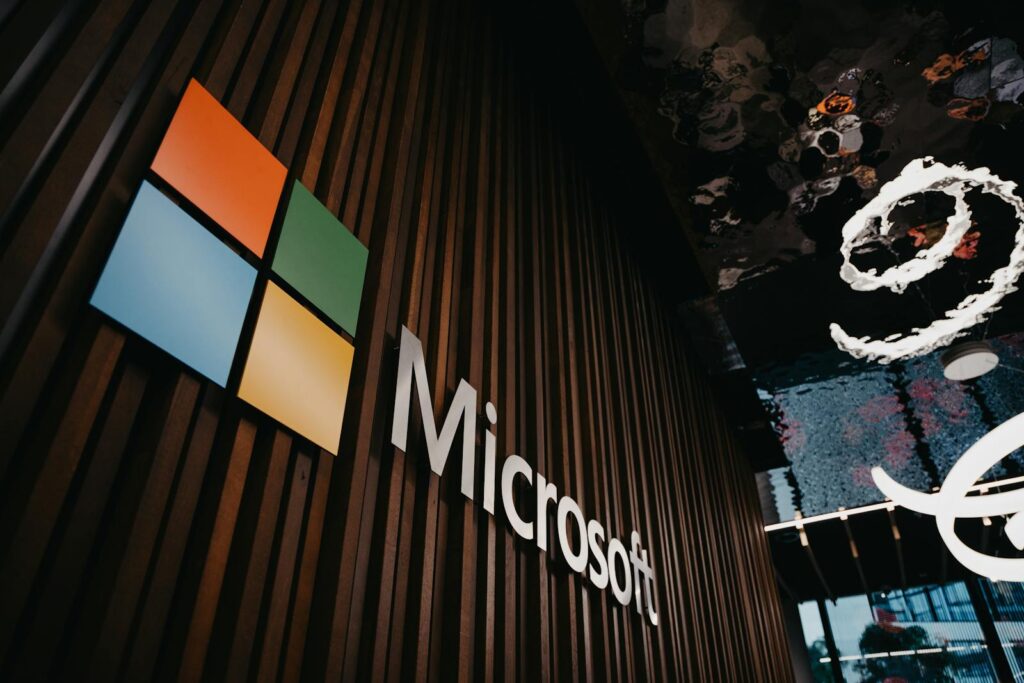
12. **Integrating Sustainability as a Competitive Advantage**Beyond technological prowess and financial acumen, Microsoft is strategically integrating sustainability and ESG (Environmental, Social, and Governance) principles as a crucial competitive advantage for future growth. This is not merely an exercise in corporate social responsibility but a deliberate business strategy designed to align with global priorities and appeal to an increasingly conscientious market. Microsoft’s ambitious pledge to be carbon negative by 2030 and to remove all its historical emissions by 2050 exemplifies this deep commitment.
This commitment goes far beyond public relations; it translates into tangible operational changes and investments. The company is actively building green data centers powered by renewable energy, reducing the environmental footprint of its extensive cloud infrastructure—a critical move given the energy demands of modern computing. Furthermore, Microsoft is investing significantly in AI tools specifically designed for climate monitoring and carbon capture, leveraging its technological expertise to contribute to broader environmental solutions.
The importance of ESG performance is increasingly becoming a factor in Microsoft’s appeal to governments and large enterprise clients. Many organizations are under pressure to meet their own sustainability targets and prefer to partner with vendors who are demonstrably aligned with these goals. By showcasing its leadership in environmental stewardship, Microsoft strengthens its reputation, enhances its brand value, and attracts partners who share similar values, creating a powerful differentiator in competitive markets.
Ultimately, sustainability is no longer a side project for Microsoft; it is a long-term growth lever. This proactive approach not only mitigates environmental risks but also unlocks new market opportunities and fosters deeper, more meaningful relationships with stakeholders. By demonstrating a profound commitment to planetary health and responsible corporate governance, Microsoft reinforces its position as a resilient and forward-thinking industry leader, ready to thrive in a future where environmental integrity is paramount to business success.
Read more about: Decoding True Value: 12 Luxury Traps That Can Become Costly Over Time for Discerning Consumers
Microsoft’s strategic journey, meticulously charted under Satya Nadella’s leadership, offers an unparalleled masterclass in corporate reinvention and sustained growth. From pioneering cultural shifts and embedding customer primacy to boldly pivoting into cloud computing and strategically acquiring key assets, the company has consistently demonstrated an ability to evolve. Looking forward, its aggressive embrace of AI, continuous reinvention of productivity, expansion of intelligent cloud infrastructure, refinement of personal computing, audacious ventures into gaming and virtual worlds, and profound commitment to sustainability collectively paint a picture of an enterprise not content to rest on its laurels. Microsoft is not just a legacy giant; it stands as an AI-powered, cloud-first juggernaut, meticulously preparing for its next trillion-dollar chapter, offering invaluable lessons for anyone seeking to understand resilience, innovation, and compounding returns in the digital age.



